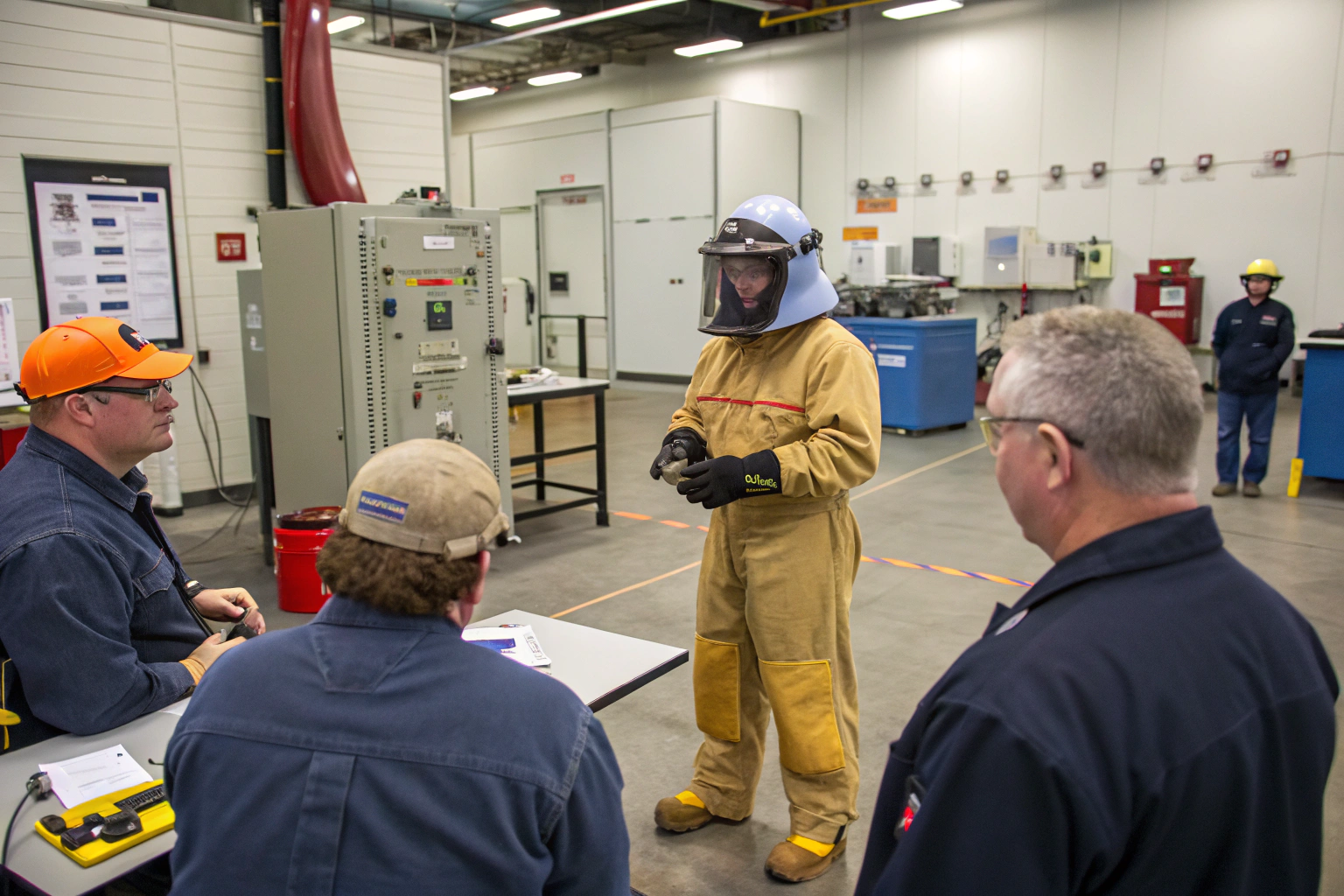Arc flash incidents are among the most dangerous hazards in modern industry. These sudden discharges of electrical energy can release heat exceeding 20,000°C, producing intense light, explosive pressure, and molten metal. Workers in utilities, construction, and manufacturing remain at risk without standardized protection, and companies face operational and financial liabilities.
IEC 61482-2 is the internationally recognized framework for protective clothing designed against arc flash exposure. It defines testing methods, garment requirements, and classification systems that ensure fabrics provide consistent safety in real conditions. For engineers, safety managers, and textile manufacturers, mastering this standard is critical to aligning with both regulatory compliance and worker protection goals.
What Does IEC 61482-2 Cover?
IEC 61482-2 establishes minimum performance benchmarks for protective fabrics and garments. It incorporates testing protocols, design standards, and certification rules to ensure comprehensive worker protection.
The standard includes:
- Test protocols: Open Arc Test and Box Test.
- Arc protection classifications: Defined thresholds for burn prevention.
- Design specifications: Seam construction, closures, overlaps.
- Labelling systems: Transparent markings for buyers and end users.
This framework allows manufacturers and buyers to communicate in a common safety language. For textile exporters, compliance opens access to heavily regulated markets, especially in Europe and North America.
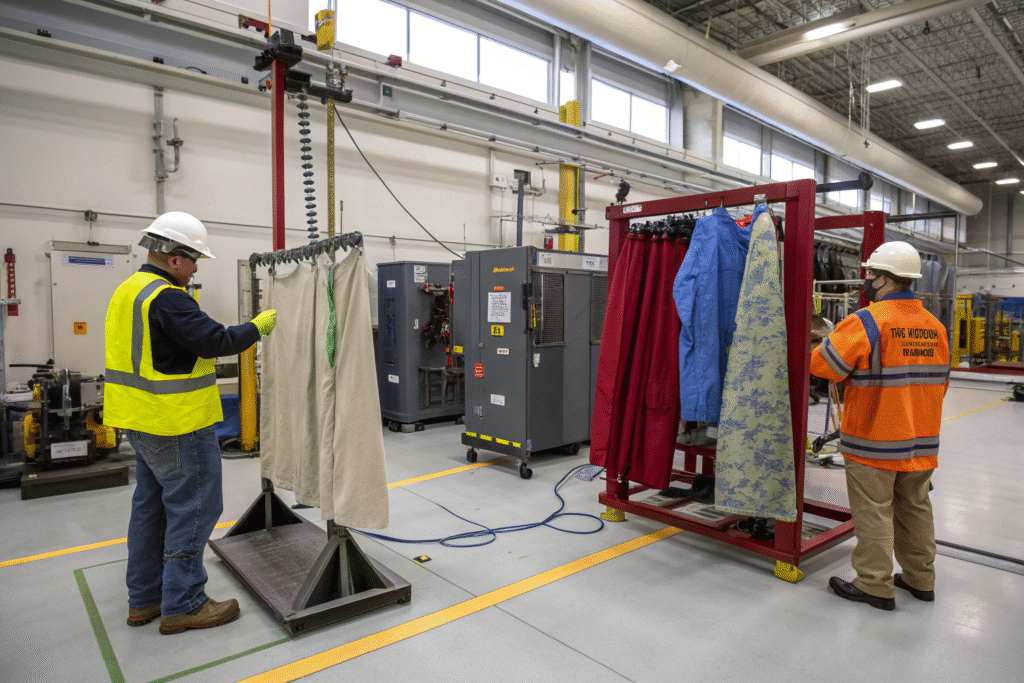
What Is the Open Arc Test?
The Open Arc Test (IEC 61482-1-1) determines the Arc Thermal Performance Value (ATPV). This value represents the maximum incident energy a fabric can endure before posing a 50% chance of second-degree burns.
For example, a fabric rated at 12 cal/cm² ATPV ensures adequate protection in environments with similar arc flash intensity. Engineers rely on ATPV to quantify real-world safety thresholds. Detailed discussions are available in NFPA guidelines.
What Is the Box Test?
The Box Test (IEC 61482-1-2) recreates a confined arc in a box enclosure, assigning fabrics to Class 1 (4 kA) or Class 2 (7 kA) based on their resistance.
This method reflects European practices, especially in electrical utilities. Buyers in the EU frequently demand Box Test certification as a baseline requirement. Detailed specifications can be reviewed at the European Safety Federation.
How Do Arc Ratings Affect Fabric Choices?
Arc ratings are more than numbers—they define the relationship between textile performance and workplace hazard levels. Engineers and sourcing managers must evaluate energy levels in the work environment and align them with garment ATPV ratings.
Core principle: Higher arc ratings equal higher protection, but often at the cost of comfort and mobility. A well-balanced system may involve layering garments, ensuring both safety and wearability.
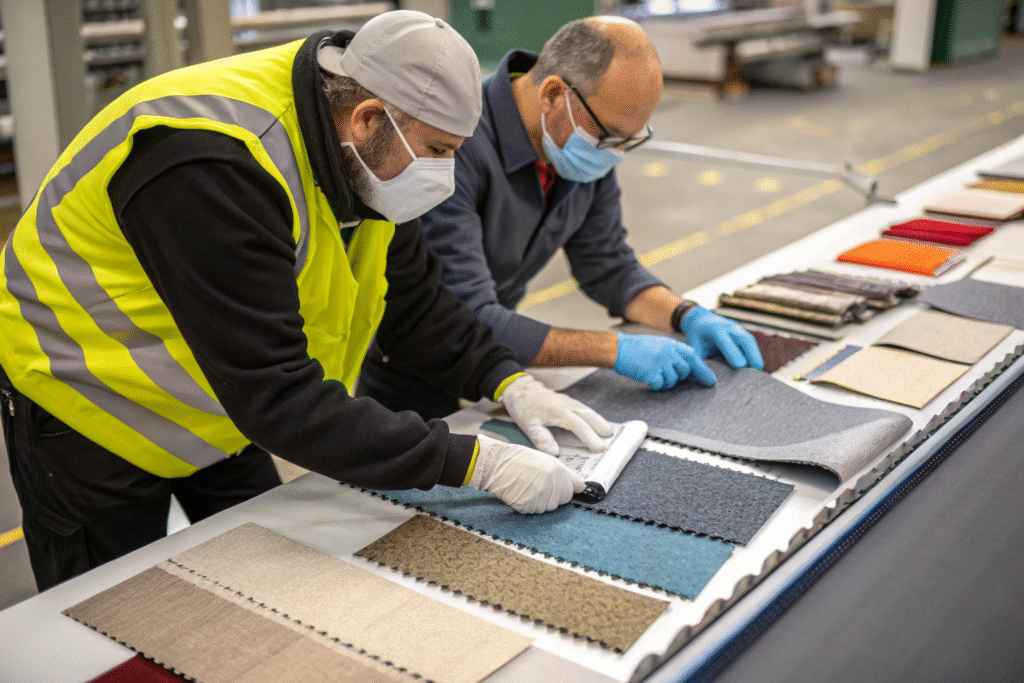
Why Does ATPV Matter in Real Workplaces?
ATPV values act as measurable thresholds for protection. For instance, electricians facing 10 cal/cm² arc flash risks must use garments tested above this level. Ignoring ATPV can result in severe injury despite apparent protection.
Industry case studies and IEEE standards confirm that ATPV-based garment selection reduces burn injury rates significantly when matched to hazard levels.
Should You Always Choose Higher Arc Ratings?
Selecting excessively high arc ratings may reduce compliance due to weight, stiffness, or heat retention. Over-protection can lead to improper garment use, negating safety benefits.
Layering strategies, promoted by DuPont Nomex, allow engineers to combine lighter base layers with heavier outer shells for versatile protection. This approach balances breathability with high thermal resistance.
What Are the Garment Design Requirements?
IEC 61482-2 emphasizes garment design because poor construction undermines fabric performance. Practical safety depends on how textiles are sewn, assembled, and reinforced.
Key aspects include:
- Flame-resistant stitching.
- Adequate overlap between top and bottom garments.
- Concealed metal components.
- Durable fasteners under thermal stress.
For manufacturers, adherence to these details prevents small design flaws from becoming life-threatening vulnerabilities.
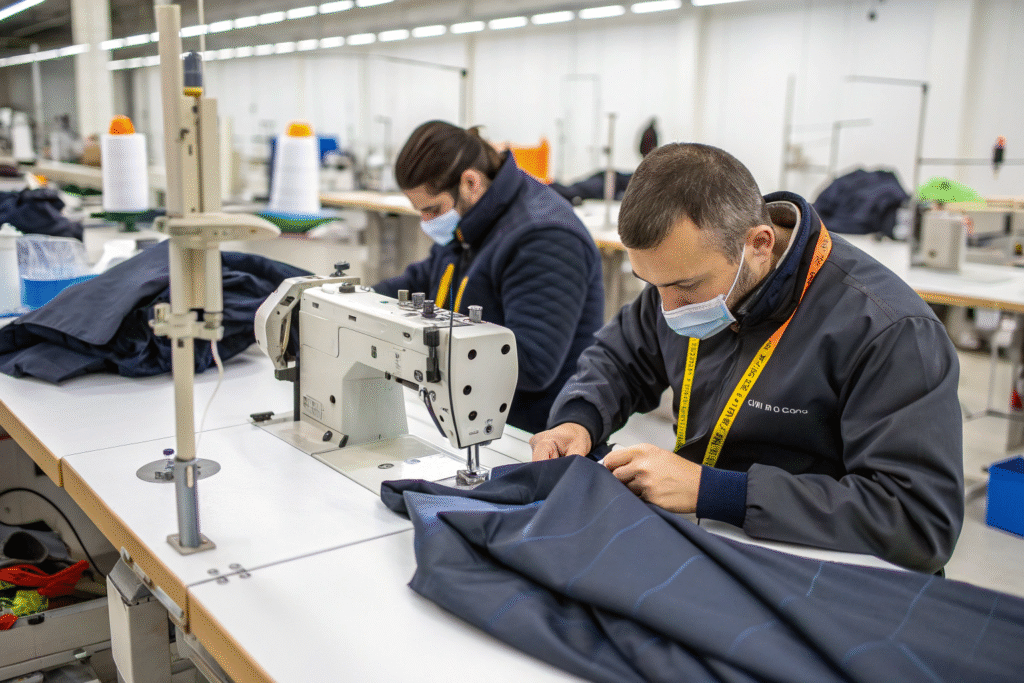
How Does Garment Construction Impact Safety?
Improper stitching or poorly covered zippers allow arc heat to penetrate, even if the fabric itself passes testing. Studies by ASTM International show that garment flaws are among the leading causes of injury despite certified textiles.
Why Are Labels and Certifications Important?
Labels serve as visual guarantees of compliance, indicating test type, arc class, and certification authority. Buyers often require verification through independent labs such as SGS.
This transparency builds trust with multinational clients who demand traceability across supply chains. Labels provide procurement teams with confidence when sourcing globally.
Why Should Buyers Demand IEC 61482-2 Compliance?
Demanding compliance with IEC 61482-2 protects both human life and corporate reputation. Buyers who enforce these standards prevent accidents and strengthen long-term partnerships with reliable suppliers.
Compliance also creates differentiation in competitive markets. Certified garments carry greater acceptance in tender processes, reducing liability risks.
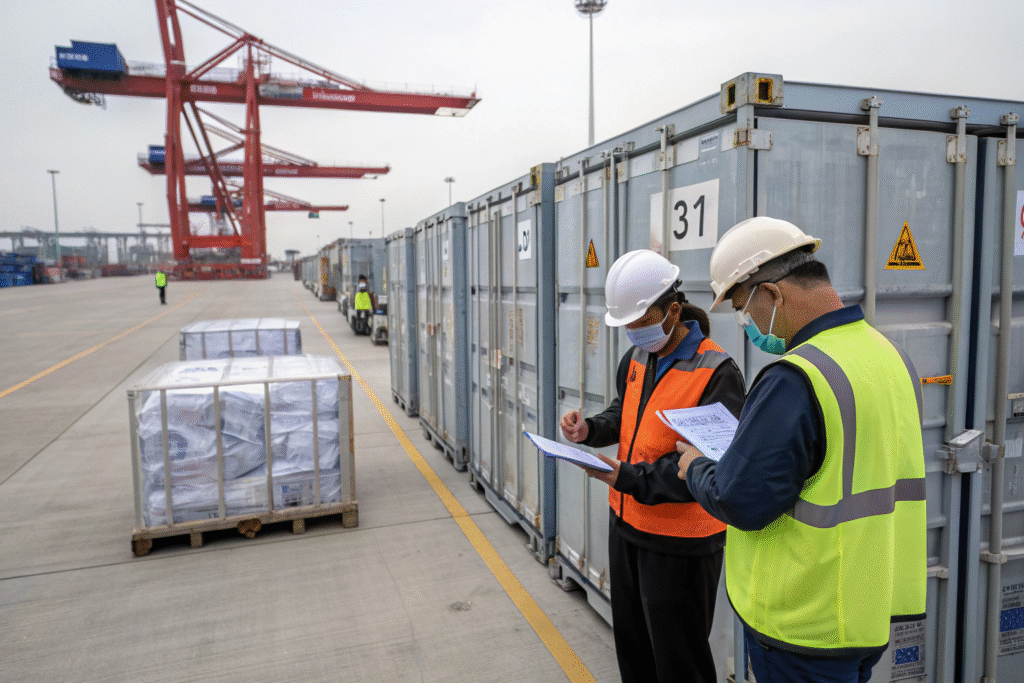
What Are the Business Risks of Ignoring IEC 61482-2?
Non-compliant garments expose companies to lawsuits, fines, and reputational collapse. Reports from OSHA document costly accidents linked to inadequate arc flash protection. Even one incident can result in contract termination and financial penalties.
How Does Compliance Create a Competitive Advantage?
Certified suppliers gain access to regulated regions such as the EU and North America. Certification also signals commitment to safety, making these suppliers attractive for multinational buyers. Bureau Veritas emphasizes that verified compliance improves tender success rates and long-term cooperation.
Conclusion
IEC 61482-2 is not a bureaucratic formality. It is a critical safeguard for protecting workers and ensuring trust in international supply chains. By covering fabric testing, garment design, and certification labelling, it sets a robust foundation for global safety standards.
Companies that enforce compliance avoid accidents, mitigate risks, and build sustainable reputations. For suppliers like us, it is a chance to demonstrate technical expertise, innovation, and global responsibility.
If you are ready to source certified protective fabrics that meet IEC 61482-2 and global standards, we invite you to contact our Business Director Elaine at elaine@fumaoclothing.com. Together, we can protect workers and build stronger partnerships.

